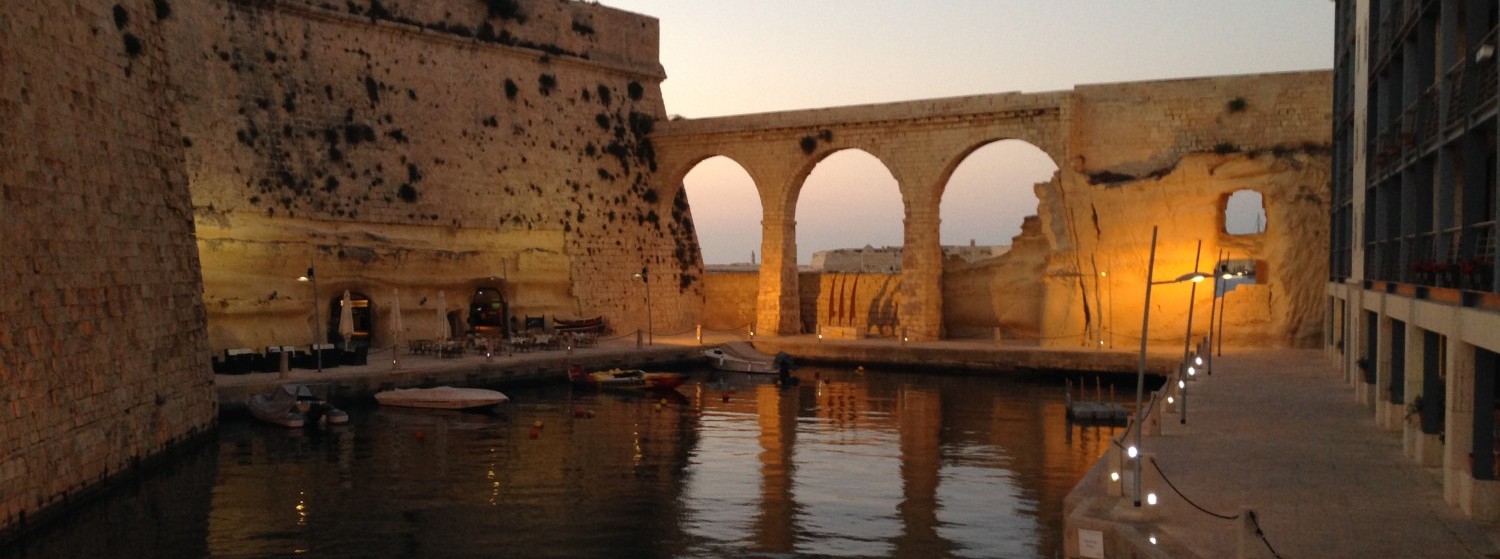 A great lesson for all of us out there off Sail Feed
A great lesson for all of us out there off Sail Feed
We had a similar jaw dropping surprise when a cruise ship passed our stern off the coast of Malta one night. We were not in the same situation/risk as these folks since we were never on a Constant Bearing, Decreasing Range (CBDR), but boy did a ship that size get our attention.
A midnight encounter with a Navy ship and what we learned from it.
Posted by Andy & Mia // June 14, 2015
I was sleeping on the port settee, the first time since we started this trip back in NYC that we were on starboard tack and I wasn’t hanging in the lee cloth. So a nice cozy sleep, and I was out cold. We’d been motor sailing all night, and the wind was veering around from SW to an expected NE as we passed through a very weak cold front. We we’re smack in the Gulf Stream to boot, but starting to make progress again in the right direction.
Loud voices and a luffing mainsail rousted me. I grabbed my glasses and peered out the companionway to see what the commotion was all about. Behind us – just, and I mean yards away – loomed the dull grey sides of a Navy ship as she slipped past. I could make out a helicopter on her aft deck bathed in yellow work lights and a few guys milling about. ‘Holy shit, holy shit!’ was all that Doug and Alyce could muster in the immediate aftermath. I didn’t fully comprehend what had happened until I climbed outside and watched the ship slide by our port side. Another few seconds of inaction – or should I say WRONG action (I’ll get to that) – by Doug, Blue Heron’s owner, and I’m sure we’d be dead.
WHAT ACTUALLY HAPPENED
Well, we aren’t dead. At least I don’t think so. I had to pinch myself to be honest in the aftermath just to make sure. I’ve never ever come that close before. But I do have a similar story that I shared with Doug that I’ll get to. But first, what actually went down.
Doug and Alyce were on watch, the rest of us asleep. They had the graveyard shift (ironic name) from 0000-0300. Around 1230 or so, according to their story that we talked through after, a Navy ship came on the radio asking them to change course so they could safely pass. We’re about due East from Norfolk, by the way. Doug obliged, and they safely passed. They were even on AIS, ‘USNS APACHE’. It’s breezy from the NNE, but otherwise clear. The stars are out, and with the new northerly wind, all the humidity is gone from the air, a welcome respite.
Anyway. Shortly thereafter, Doug and Alyce identified another set of lights on the horizon to starboard, and started monitoring it. Nothing on the AIS though. Alyce thought she saw something on the chart, but it’s not clear what, or if she meant AIS or actually printed on the chart. They’d been navigating on the Furuno NavNet chartplotter that’s in the cockpit under the hardtop. Alyce is on her first ocean passage. She’s been sailing before, but only recreationally and never at night to my knowledge.
Both Doug and Alyce were unsure of these new lights. They concluded that it must be a platform of some sort, anyway something that was stationary. Doug altered course slightly to port. The object was still on a constant bearing (though Doug didn’t think of it this way yet), so he continued altering course to port. All the while I’m asleep. Eventually, and almost too late, Doug realized his mistake – it was a ship after all and had actually been moving. Doug’s course alterations – they were wrong, which I’ll get to – were simply keeping it on a collision course with us. In the end, he turned hard to port and actually did a loop to let it pass. And JUST. It wasn’t even funny-close. It was effing scary-close.
MISTAKES
Rule #1 when I came aboard Blue Heron as skipper for this shakedown cruise (Doug and Tasha had bought the boat, an HR43, about a year ago and hired me to help them get safe offshore experience) was that the crew wake me up at the SLIGHTEST inkling of doubt. Whether course change, sail change, confusing lights, whatever. My life when I’m asleep is literally in the hands of those on watch and I needed to be SURE they’d get me at the slightest question.
I think we’d all gotten dulled into complacency by the ease if the trip so far. Nice sailing, good visibility. The homeward leg, only 275 miles to NYC to complete the circle. For whatever reason, Doug and Alyce didn’t wake me, and proceeded assuming what they saw was a stationary platform.
As an aside, I made exactly the same mistake in 2012. Mia and I were sailing Arcturus across the North Sea from Scotland to Sweden. Our first big double handed passage, four on, four off. The North Sea of course is littered with oil rigs. At any given time at night we could see a dozen of them. Arcturus was motoring in light air, I was hand steering. I saw what I thought was just another platform and altered to port. Same thing happened. Before it got too close though, I woke Mia for a second opinion. In my sleep-deprived state I’d made a poor call. She saw right away it was a ship and we averted disaster a lot sooner than in this case tonight, though it was a strikingly similar series of events that could have caused trouble.
The first mistake was not waking me. The second was not realizing he was in a CBDR – Constant Bearing, Decreasing Range – situation. A collision course. The third was the following.
In both cases the un-identified lights were to starboard, and in both cases we incorrectly altered course to port. Since it was indeed a ship, and we were both under power, we in fact were the give-way vessel. Anytime you’ve got another boat from dead ahead to 120 degrees to your starboard, they’ve got right of way (assuming you’re both motoring). And in that case, you ALWAYS alter to starboard. Mistake number 3. By altering to port, Doug was keeping Blue Heron in that CBDR situation. Because it was nighttime, he had a tough time judging the distance (range), and didn’t realize his mistake until it was almost too late.
TEACHABLE MOMENTS
I was too scared at first to be angry (that came later), but once the dust settled, we talked through what happened. I guarantee that Doug will never get himself in that situation again. Nothing quite like a near-death experience to properly engrain some new knowledge.
In the end though, we took away the following:
1. Wake the skipper when there are ANY questions.
With my new business on Isbjörn, our Swan 48, I’ll be putting myself in this same situation over and again – inexperienced crew on watch while I sleep. Somehow I need to do a better job of getting this point across. And crew, you need to take it seriously.
2. Learn your lights & Rules of the Road.
3. Learn how to determine a CBDR situation at night.
It’s as easy as watching the un-identified lights in relation to a fixed point on your boat. A shroud or stanchion, say. Or get out the hand bearing compass. You have one right? If it doesn’t move in relation to that, you’ve got a constant bearing. It’s hard to judge distance at night, but constant bearing is enough to know you ought to do something.
4. Recognize a chain of events that might lead to trouble and break it!
Doug’s decision-making process was the classic domino effect that so often leads to disaster. One small error compounded over time and before you know it it’s too late. Recognize the POSSIBILITY of such a chain of poor decisions – even if you think you’ve made the right one – and take action to break that chain, even by simply getting a second opinion, before it’s too late. Be humble.
5. Plan for the worst.
What would have happened had we been too late in turning? Tasha, Oskar and I were all asleep down below. Doug and Alyce might have wound up in the drink unscathed if we’d had a direct collision. They had PFDs on, and presumably the offending ship would have stopped to help. But us three in the cabin? Our chances would have been pretty slim of escaping the wreckage for one, and staying afloat without PFDs.
If you recall the Rambler 100 incident in the Fastnet Race a few years back, you’ll know they lost their keel shortly after rounding the rock and the boat turned turtle rather suddenly. But they were a pro crew and had drilled for this kind if thing. Remarkably, the off watch had the presence of mind to not only escape the boat, but grab their PFDs in the process. They all survived.
When you’re asleep on passage, do you know EXACTLY where your personal PFD is, and could you grab it in the dark in a panic? We’d been lax in this area too, chucking our PFDs in a pile on the starboard settee. Correctable mistakes were made to cause this near miss with the ship, but what if we’d have hit a container? You’ll never see that, so not much you can do there but be prepared when the water starts rushing in. I think I’ll be sleeping closer to my PFD from now on.
FINAL THOUGHTS
I got a bit angry at Doug after the adrenaline wore off and I tried to go back to sleep. He broke Rule #1, and in doing so, put us all in danger.
But I got pissed at myself too. Somehow that ‘call the captain’ rule wasn’t taken seriously enough, and I have to shoulder some of that blame. We also hadn’t, in hindsight, briefed the chart in enough detail. There are no fixed platforms in this part of the ocean, so that error should have never happened. Doug was also conferring with Alyce. Nothing against her, but she’s the least experienced crew on board, and he should have asked me.
Anyway, we escaped unscathed, and now all we can do is take this forward, learn from it ourselves, and tell the story to others as a cautionary tale. Doug knows that he’ll forever be the subject of my ‘what not to do’ speech anytime I brief a new crew from now on! That may be a little embarrassing, but he’ll certainly never make the same mistake.
Until next time..

Leave a Comment